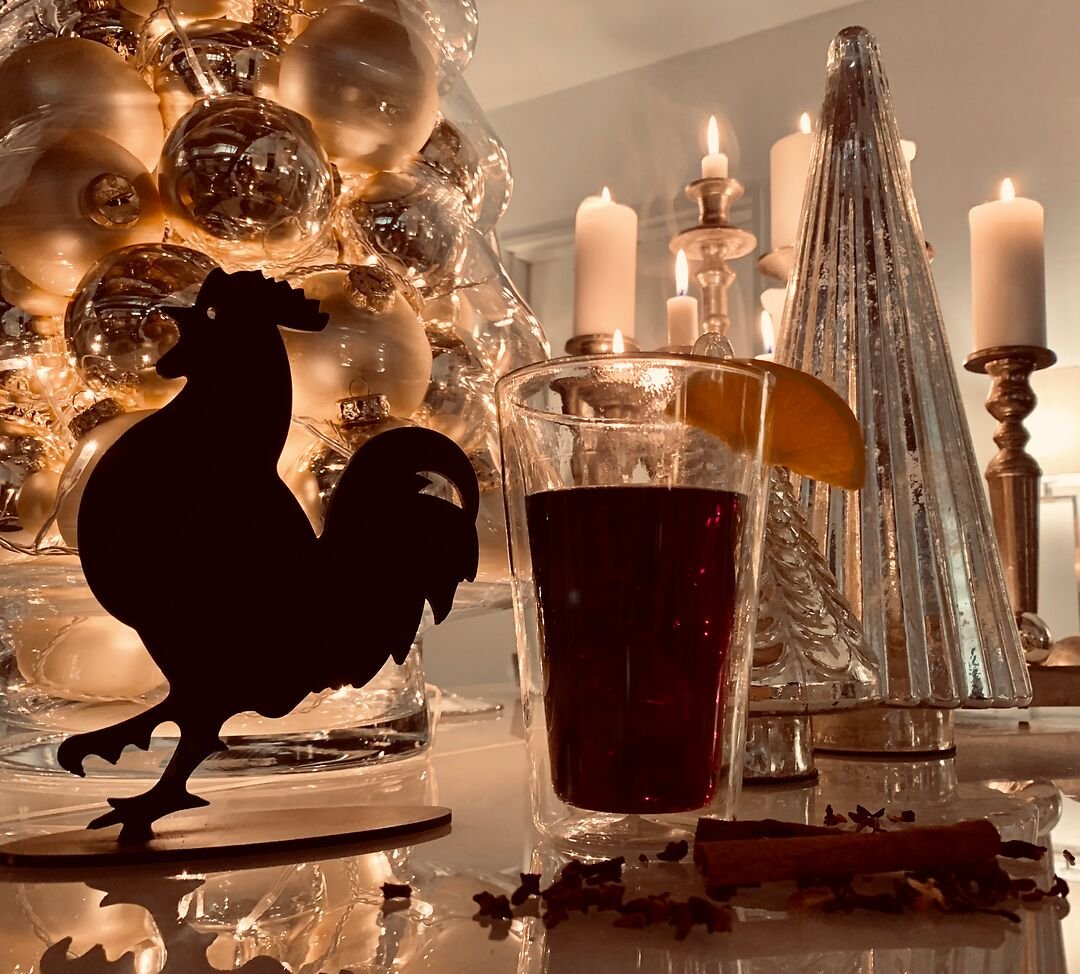Advent time is mulled wine time!
Today it's about one of my favorite topics: Wine, of course - but this time it's the hot version - mulled wine!!! When the days get shorter and the nights are freezing cold and Advent is in the air, it's high time for mulled wine.
Mulled wine time
When I think of this drink, or rather the smell of mulled wine, I always think of winter in my grandparents' house. Today, I like to use red wines from Chianti for mulled wine. After all, the basic rule also applies to mulled wine: the end product can only be good if the starting product is good. And so that you too can enjoy a perfect Gallo Nero mulled wine, I'm sharing my very own Nina in Chianti mulled wine recipe with you.
My grandparents lived in the Weinviertel region in northern Lower Austria. And in winter they often had mulled wine for dinner. As the Weinviertel is a traditional white wine-growing region, it goes without saying that mulled wine was also made with white wine - usually Grüner Veltliner. Of course, I didn't drink mulled wine as a child. But the smell alone that filled the kitchen was always a foretaste of Christmas for me, simply a homely feeling. And even today, I still get excited when there is white mulled wine somewhere. The nice, fresh acidity of the white wine harmonizes perfectly with cinnamon and cloves. Add a little sweetness and maybe some lemon or orange peel - and you're done! If you're skeptical now, it's best to simply try a white mulled wine...
Red, red wine for mulled wine!
Traditionally, however, mulled wine is made from red wine. So it's only natural that I use wines from the Chianti Classico region. And why? Quite simply because a good wine is also the ideal basis for a good mulled wine! And who wants bad mulled wine? Sangiovese in particular is the ideal base for mulled wine due to its acidity and cherry fruit notes. My recommendation: choose a Sangiovese wine at ninainchianti.com, order it and off you go!
Also ideal for a mulled wine: La Lepre from Le Fonti, which with its blend of Sangiovese, Cabernet Sauvignon and Merlot also gives mulled wine its very own touch. For those who prefer something more international, I recommend the Cinciorosso from Le Cinciole, which is made from 70 percent Sangiovese, 15 percent Cabernet Sauvignon, 10 percent Syrah and 5 percent Merlot.
My Nina in Chianti mulled wine recipe
Personally, I always start my mulled wine with caramel. This may sound complicated to some, but it's not really.
Another serving suggestion
Double-walled glasses - the mulled wine stays warm and your fingers don't get hot
Another serving suggestion from me: Chianti Classico mulled wine shows its best side in double-walled glasses, which are often used for hot drinks such as coffee or tea, and it stays warm for longer.
Goes well with: Prunes wrapped in bacon
By the way, prunes wrapped in bacon go perfectly with mulled wine. It's very quick and easy: soak prunes in Chianti Classico for an hour or two - but you don't have to - drain them well, wrap them in a slice of pancetta - i.e. bacon - and braise in the oven at 160 degrees for about ten minutes and serve while still warm. This tastes incredibly good as a "balance" to the slightly sweeter mulled wine.
So Advent can come! And in the meantime, all that remains for me to say is: cheers to the Gallo Nero!



